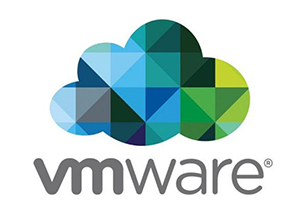 Version 2.3.1 of VMware Big Data Extensions was released on March 29, 2016. The latest version includes the fix for the glibc vulnerability disclosed in February. The current branch saw many new features included back in December when v2.3 was released, including an updated CentOS 6.7 template and support for multiple VM templates within the BDE vApp. The full release notes for the 2.3 branch can be viewed on the VMware site.
Version 2.3.1 of VMware Big Data Extensions was released on March 29, 2016. The latest version includes the fix for the glibc vulnerability disclosed in February. The current branch saw many new features included back in December when v2.3 was released, including an updated CentOS 6.7 template and support for multiple VM templates within the BDE vApp. The full release notes for the 2.3 branch can be viewed on the VMware site.
I’ve been anxious to upgrade my lab environment to 2.3 for the past several months, however time has been extremely limited due to a heavy workload and family life. Fortunately, the Bay Area experienced a rather rainy weekend and with all the little league baseball games getting cancelled, I was able to sit down and deploy the latest version into my vSphere 6.0 lab.
One of the major improvements that has been made to VMware Big Data Extensions (BDE), is the administrative HTTPS interface running on port 5480. Once the vApp is powered on and you have changed the default random password, point your browser to the interface and login. From there, you will be greeted with a summary screen where you can see the status of the running services. When the BDE management server is initializing, you can monitor the status of the initialization and see any error messages (if they occur).
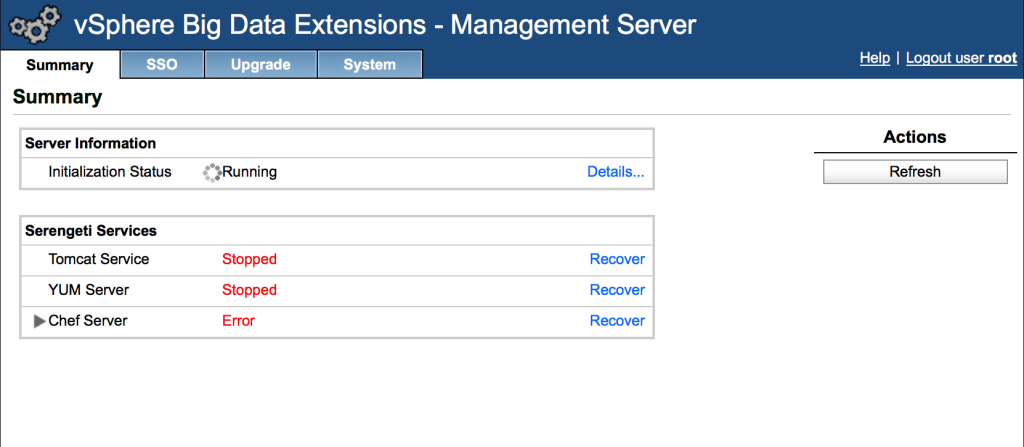
Clicking the ‘Details…’ link to the right of Initialization Status will load the following pop-up that allows you to watch the progress of the management server.
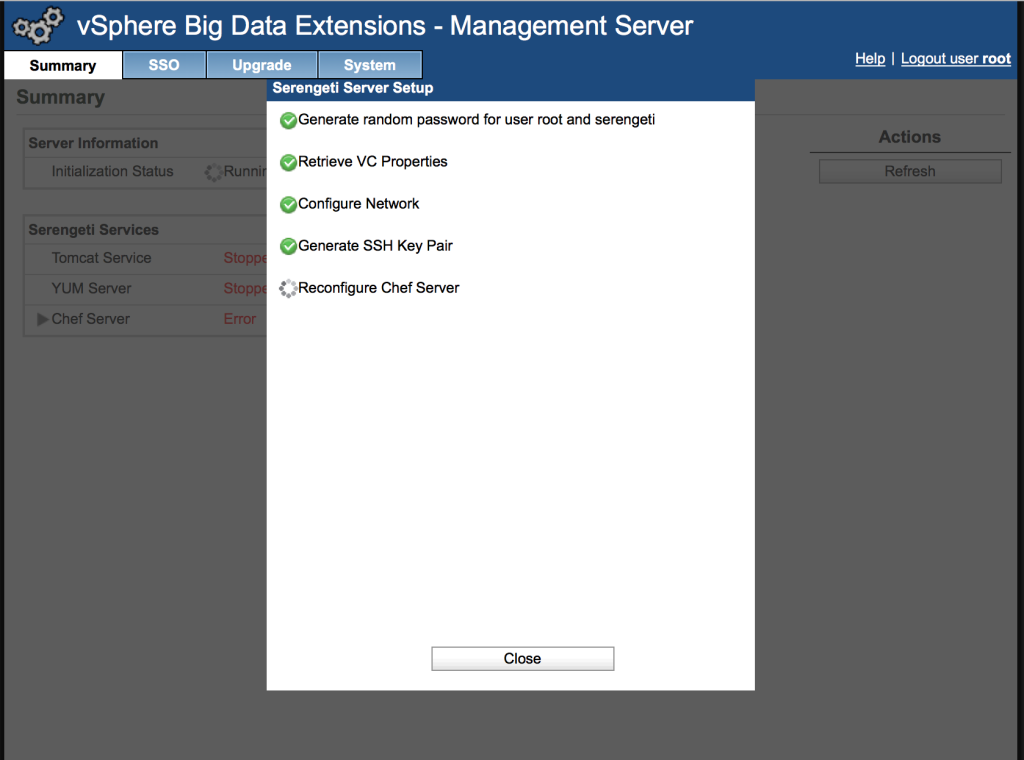
Once all of the initialization steps complete successfully, the Summary screen can be refreshed and it should show all of the services operational.
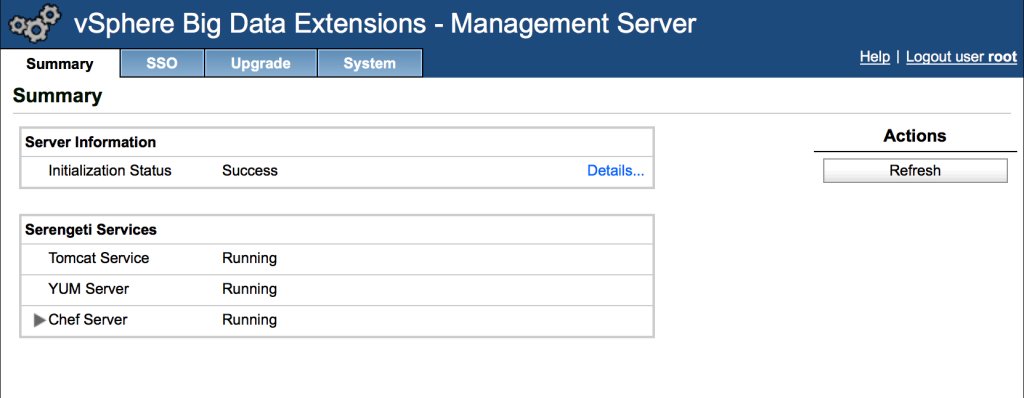
At this point, log out and back into the vSphere Web Client to see the Big Data Extensions icon and begin managing the vApp.
The BDE management server is missing two key packages which will prevent a deployment from being successful — mailx and wsdl4j. The BDE documentation includes the following instructions for adding these packages to the management server:
The wsdl4j and mailx RPM packages are not embedded within Big Data Extensions due to licensing agreements. For this reason you must install them within the internal Yum repository of the Serengeti Management Server.
In order to install these packages properly, you will need to execute the following commands on the BDE management server.
# su - serengeti $ umask 022 $ cd /opt/serengeti/www/yum/repos/centos/6/base/RPMS/ $ wget http://mirror.centos.org/centos/6/os/x86_64/Packages/mailx-12.4-8.el6_6.x86_64.rpm $ wget http://mirror.centos.org/centos/6/os/x86_64/Packages/wsdl4j-1.5.2-7.8.el6.noarch.rpm $ createrepo ..
After verifying the proper VMFS datastores and Networks are configured within the BDE application, I always like to perform a test deployment of a basic Hadoop cluster. Doing so allows me to be sure everything is working as expected before I begin modifying the BDE management server. A test deployment is also a good way to see if anything in the BDE workflow has changed — it just so happens there is now a nifty new drop-down menu for selecting the VM template that should be used for the deployment.
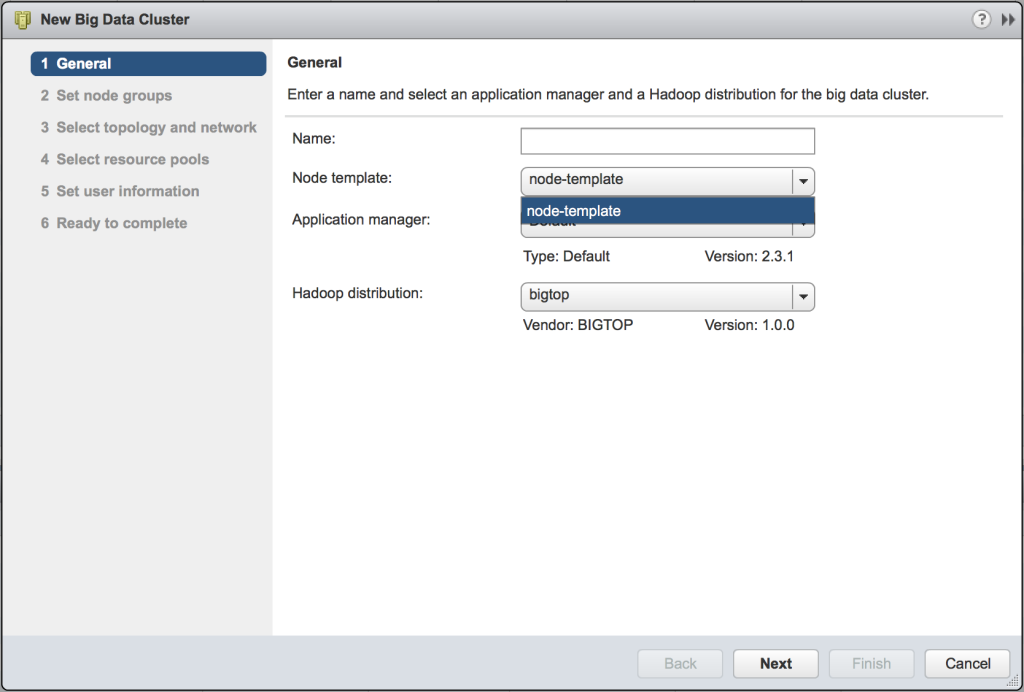
A successful installation of a basic Hadoop cluster means the VMware Big Data Extensions application is ready for consumption and modification to support the Cloud Native Applications (Marathon, Mesos, Kubernetes, etc) I require in my lab environment.
Enjoy.







